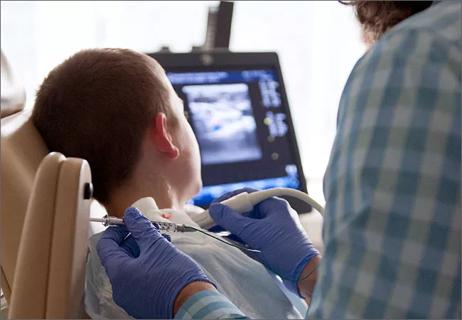Case-control study yields evidence of epigenetic aging in pediatric-onset MS

Young individuals with pediatric-onset multiple sclerosis (POMS) exhibit accelerated biological aging compared with their healthy peers, finds a multicenter case-control study published in Neurology.
Advertisement
Cleveland Clinic is a non-profit academic medical center. Advertising on our site helps support our mission. We do not endorse non-Cleveland Clinic products or services. Policy
This finding, derived from analysis of DNA methylation patterns using “epigenetic clocks,” suggests that the underlying pathophysiology of MS may drive premature aging processes even in the youngest patients. Although still hypothesis-generating, the study’s results underscore the potential role of biological age as a key factor in MS severity and progression, which could open new avenues for understanding and mitigating the disease’s long-term impact.
“Recent studies have yielded evidence of accelerated epigenetic aging in adults with MS relative to age-matched controls,” says pediatric neuroimmunologist Aaron Abrams, MD, a coinvestigator with the new study and staff at Cleveland Clinic’s Center for Pediatric Neurosciences and Mellen Center for Multiple Sclerosis Treatment and Research. “These findings suggest that MS pathophysiology may accelerate biological aging and thereby contribute to the age-dependent phenotypes that are seen in MS. Because it’s hard to tease out the contributions of natural aging and age-related comorbidities from hastened biological aging that may be caused by MS, we decided to assess biological aging in a pediatric population to reduce potential confounding.”
Indeed, the POMS population is “ideal for asking the questions of how early the process of accelerated aging starts in MS and, if it starts early, which factors might be linked to this acceleration,” notes an editorial accompanying the study in Neurology.
The study was a multicenter, cross-sectional, case-control investigation drawing from a prospectively collected dataset within the U.S. Network of Pediatric MS Centers, which includes Cleveland Clinic. The researchers analyzed whole blood DNA samples and clinical data from 125 individuals with POMS and 145 age-similar healthy controls. All participants were of Northern European ancestry to minimize confounding on methylation patterns. Cases were diagnosed with MS or clinically isolated syndrome before age 18, with disease onset less than four years before enrollment.
Advertisement
The objective was to compare epigenetic age — a specific measure of biological age based on DNA methylation patterns — between participants with POMS and the controls.
A central backdrop to the study is previous research indicating that biological age may be a more precise measure than chronological age for capturing an individual’s true aging status and its impact on disease. Biological age can be calculated in terms of epigenetic age using so-called epigenetic clocks — i.e., algorithms that determine estimated biological age based on DNA methylation profiles, which can differ from chronological age. This difference — known as age acceleration — may reflect cumulative exposure to environmental factors, lifestyle choices or disease processes. Prior studies in adults with MS have used epigenetic clocks to demonstrate accelerated biological aging.
In the study, quantitative DNA methylation scores were derived from 850,000 cytosine-phosphate-guanine sites in the DNA samples. The researchers then calculated epigenetic age using four established epigenetic clock algorithms: Horvath, Hannum, GrimAge and PhenoAge. The Hannum and Horvath clocks were designed to estimate chronological age, whereas PhenoAge and GrimAge were developed to predict age-associated clinical outcomes like disease or death.
To assess accelerated aging, the researchers calculated age acceleration residual (AAR), which is the difference between epigenetic age and chronological age calculated by regressing epigenetic age on chronological age. This metric represents how much older or younger an individual is biologically, relative to their chronological age. Multivariate regression analysis was used to compare epigenetic age and AAR between cases and controls, adjusting for demographic variables such as age, sex, body mass index (BMI) and tobacco exposure.
Advertisement
The study found that participants with POMS (mean age, 15.7 years) had numerically greater point estimates of epigenetic age and AAR compared with age-similar healthy controls across all four epigenetic clocks tested. Before adjusting for demographic factors, the AAR in the POMS group ranged from 0.52 to 2.53 years older than in healthy controls, depending on the clock used.
After adjusting for demographic variables, the difference in epigenetic age and AAR remained statistically significant for two of the four clocks: the Hannum clock and the PhenoAge clock. Specifically, after multivariable adjustment, participants with POMS were biologically 1.50 years older (95% CI, 0.58-2.42; P = .002) than controls according to the Hannum clock and 1.72 years older (95% CI, 0.09-3.35, P = .004) according to the PhenoAge clock.
The epigenetic clocks’ validity in the pediatric population was supported by strong correlations between chronological age and epigenetic age across all four clock algorithms. Moreover, the proxy for age acceleration — AAR — was confirmed to be independent of chronological age. “This suggests that the measures were robust and appropriate to be used in the population studied,” notes the editorial accompanying the study.
Notably, the study found mean BMI to be significantly higher in the POMS group compared with controls and found higher maternal education and private insurance to be significantly more common in the control group.
The authors found that adjusting for BMI accounted for a significant portion of the observed difference in epigenetic age, particularly for the GrimAge clock. The authors note that this underscores the potential role of obesity — a known risk factor for POMS that is also associated with worse outcomes — as a factor influencing epigenetic aging in this population. “This finding suggests that obesity or related factors might promote a setting that could accelerate the aging process,” Dr. Abrams observes.
Advertisement
“Our results provide evidence that accelerated biological aging is present in individuals with POMS and that this acceleration is detectable early in life — among individuals with a mean age under 16 — and within a few years of disease onset,” Dr. Abrams says. “This suggests that MS pathophysiology itself may be driving premature aging.”
He and his coinvestigators note that accelerated biological aging could potentially serve as a valuable biomarker in the future, perhaps helping to explain the variable clinical trajectories seen in POMS. Understanding the drivers of accelerated aging — whether inflammation, obesity, other environmental/lifestyle factors or a combination — also could reveal novel therapeutic targets aimed at slowing this process and potentially improving long-term outcomes in patients with POMS.
The investigators conclude their study report by noting the need for further research to establish causality for epigenetic aging in this setting and to explore underlying mechanisms. They call for studies that analyze specific cell types, as their investigation was limited to whole blood, which precluded analysis of whether accelerated aging occurred preferentially in specific cell types, such as immune or glial cells, which are implicated in MS pathophysiology and have shown accelerated aging in adult MS studies.
Advertisement
Advertisement

Leaders of the Pediatric Cancer Committee discuss new accreditation

6 objective measures to assess pain and evaluate progress

Relapse rates were lower with oral or infusion therapy after initial injectable DMT

Evidence, clinical considerations, and why more research is still needed

Multidisciplinary team coordinates, adds efficiencies to care

First-in-human phase 1 trial induced loss of function in gene that codes for ANGPTL3

Paired blood and brain tissue methylation findings raise prospect of noninvasive precision diagnosis

Mixed results from phase 2 CALLIPER trial of novel dual-action compound